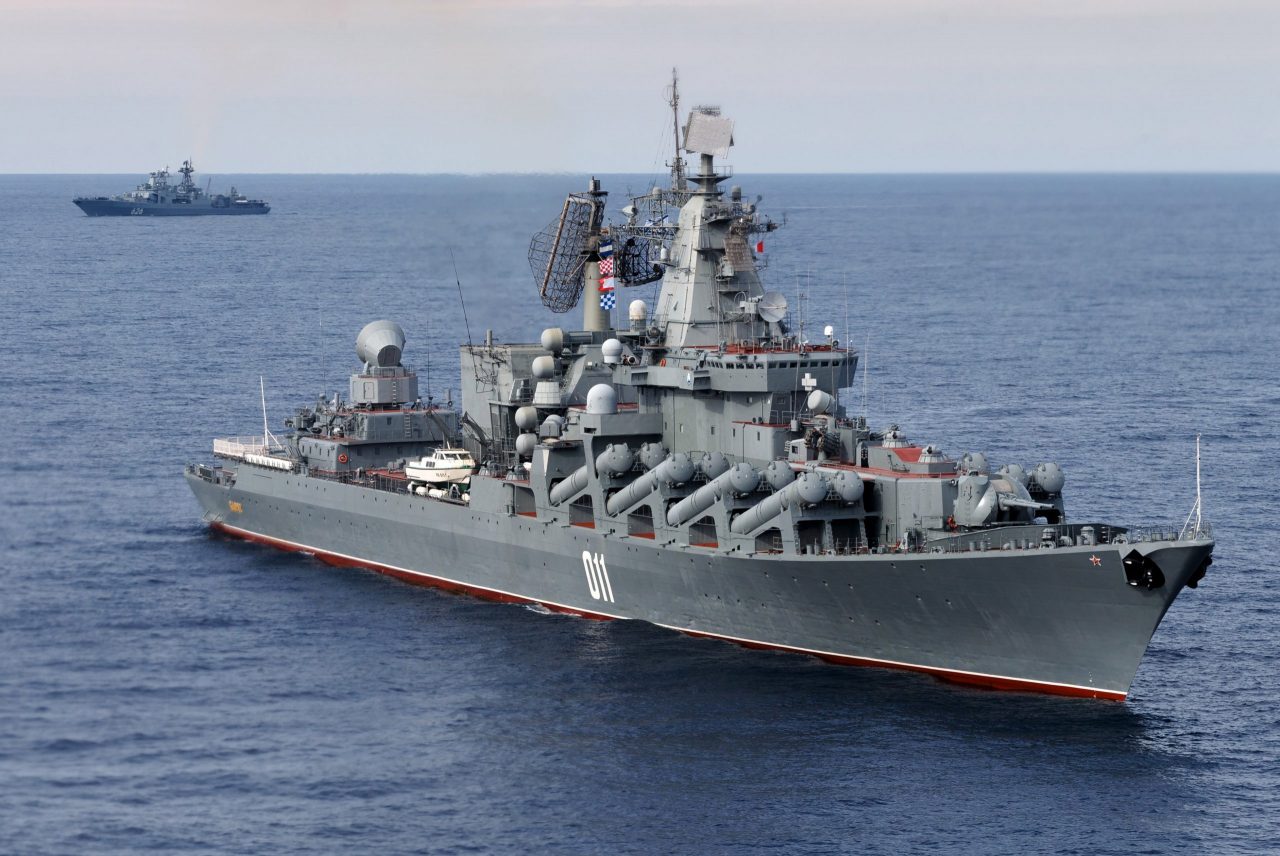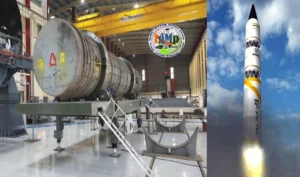The interception of the Ukrainian anti-ship missile Neptune and High Mobility Artillery Rocket Systems (HIMARS) by Russia was preceded by Ukrainian President Volodymyr Zelensky announcing large-scale production of the former along with other domestically produced anti-tank missiles and 155mm artillery shells.
This served as a hint for what was about to hit Russia as Ukraine put in motion ambitious plans to keep manufacturing asymmetric weapons to resist the Russian onslaught. Moreover, Russia will soon introduce a drone to provide overhead surveillance for its warships, possibly as a measure against the persistent kamikaze drone boat attacks.
This suggests the naval leg of the conflict might escalate, devoting more Russian resources – which seems to be the Ukrainian objective rather than sink Russian warships.
The Neptune had sunk the Moskva guided missile cruiser of the Russian Navy’s Baltic Sea Fleet on April 15 last year. After that, since October 2022, Ukraine has attempted to strike Russian Navy ships in the Sevastopol naval base in Crimea and then deeper into the Black Sea by unmanned surface vessels (USV) acting as suicide boats.
It has employed at least four types of USVs, which many Russian military bloggers and analysts say have been developed with American assistance. The Russian Ministry of Defense (RuMoD) has long accused the US and NATO of providing targeting information and guidance using its unmanned aerial surveillance aircraft like the RQ-4B Global Hawk.
The RuMoD on August 29 claimed intercepting “two HIMARS rockets, one Neptune anti-ship missile and two High Anti-Radiation Missiles (HARM).” It, however, did not specify whether Ukraine fired the missiles on Russian targets over the Black Sea or land.
But previous statements by Ukrainian officials have directly hinted and revealed that Ukraine was using a heavily modified and upgraded version of the R-360 Neptune, repurposed for land-attack roles.
Zelensky Hints Neptune Would Rise Again
But before that, on August 27, in an interview with journalist Natalia Moseychuk published by the official website of Zelensky’s office, the latter talked about Ukraine’s advancing defense industrial base and growing interest from leading technology companies to invest there. Zelensky went on to say how several programs have been launched at Ukroboronprom enterprises, including missile programs.
“Ukraine currently produces Neptune, Stugna, and Corsair, and the volume of this production is growing significantly. It’s just enormous numbers at the front, constantly in need, that our servicemen approve, and they want even more, but you can’t even imagine how many we are producing. It’s a big, huge number,” Zelensky said.
Zelensky’s subsequent statement validated other previous reports about the country becoming a testing ground for many Western military technologies, particularly drones, autonomous UAV flight, and Artificial Intelligence (AI).
“It is of great importance that we are a tester, a pioneer – in the good sense of the word – of the launch and use of many types of ammunition. Modern ones. This is a great example for many businessmen around the world. We will be number one in this area – military tech and digital. At least on the European continent,” Zelensky said.
Neptune Missile That Sunk Moskva Now Hits Land
On August 26, the Secretary of Ukraine’s National Security and Defense Council, Oleksiy Danilov, was quoted talking about the August 23 strike on the Russian S-400 air defense (AD) system in the Western part of the country.
“A new Ukrainian missile destroyed the S-400 launcher in Crimea. The missile was new. The missile was absolutely modern. Yes, this is our new product, which proved to be absolutely flawless,” Danilov said. He added that this was a project of Ukroboronprom, and the program was launched in 2020.
Presumably, Ukraine has tweaked the missile’s guidance and target seeker systems in the nose section. Usually, anti-ship missiles have Radio Frequency (RF) and Infrared (IR) seekers, while land-attack missiles like air-to-ground munitions (AGM) often have optical seekers. However, the exact nature of alterations to the missile’s guidance, navigation, and propulsion system remains unknown.
It wouldn’t be too far-fetched to conclude that Ukraine is developing its long-range missiles owing to its Western arms donors’ denial of such weapons to Kyiv. The West fears that Ukraine will use land attack missiles that can go 300 kilometers and beyond, deep inside Russian territory, which might entail Russian civilian casualties.
The calculation is that this will escalate the war as Russia might remove its self-restriction on attacking territory of NATO member states from where weapons are sent to Ukraine.

New Russian Naval Drone May Detect Kamikaze Drone Boats
Meanwhile, Russia’s embattled Black Sea Fleet is on its way to receiving a new aerial reconnaissance drone, Sarych-2, after it was extensively tested by the warships and sailors there. The ‘flying-wing’ design UAV is undergoing “state tests.”
At the same time, “batches” of these aircraft have already been purchased by the Crimean government, according to a representative of the drone’s developer Roboavia, Valentine Kiselev, quoted in a report on RIA Novosti.
The drone has an electric motor, weighs 14 kilograms, has a wingspan of 3.1 meters, and can fly at an altitude of five kilometers at a speed of 108 km an hour. That is a purely reconnaissance and surveillance aircraft meant to enhance a warship’s or a fleet’s radius of view and give early warning of advancing surface threats, which can be guessed from the extensively described optical system in the RIA Novosti report.
The drone’s video camera and thermal imager have a 60x magnification in HD format “that can detect enemy equipment at a distance of up to 2.5 kilometers.” Also, the onboard computer tracks itself and calculates its coordinates, greatly facilitating the drone operator’s work while being adequately proofed against Electronic Warfare (EW) systems.
An algorithm flies the UAV autonomously to the base in case of complete loss of communication. This suggests that EW that jams the radio frequency link between the operator might not lead to the aircraft descending downwards into enemy hands.
Source link
#Russia #Braces #Asymmetric #Ukrainian #Onslaught #Zelensky #Hints #Moskva #Killer #Neptune #Missiles #Rise







